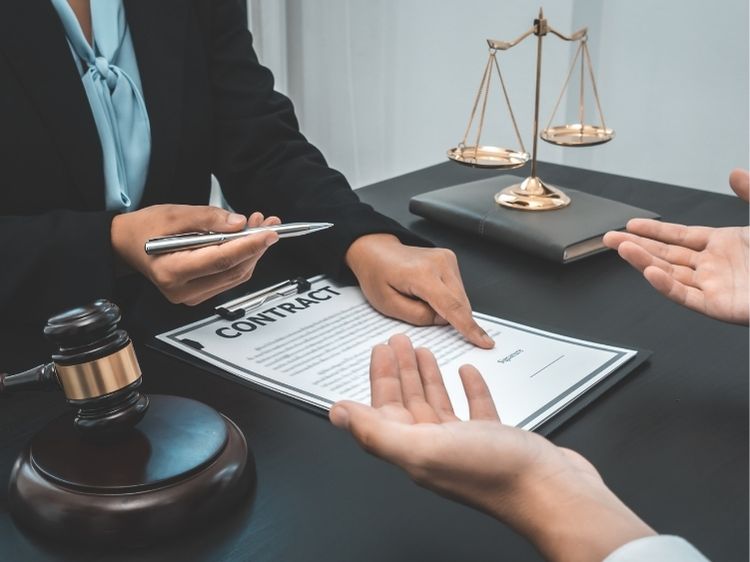In the world of law, product liability refers to the responsibility of manufacturers, distributors, suppliers, and retailers to ensure that products they bring to market are safe for public use. When these products cause injury or harm, legal action can be taken under the umbrella of product liability. Today, we’ll explore some notable product liability cases examples to better understand how these cases unfold and what the legal outcomes might be.
Introduction to Product Liability
Product liability cases can be complex and multifaceted, often requiring a deep dive into various legal principles and extensive evidence. In short, these cases arise when a product is found to be defective or dangerous, and the consumer ends up being harmed. There are generally three types of product defects that can lead to liability:
- Design Defects: When the design itself is inherently flawed, making the product dangerous even when used correctly.
- Manufacturing Defects: Occur during production, where a product might deviate from its intended design.
- Marketing Defects: This includes failure to provide adequate warnings or instructions on proper usage.
What Makes a Product Liability Case Stand Out?
A product liability case requires certain elements to be proven in court:
- Defective product: The plaintiff must show that the product in question was defective.
- Injury: There must be a proven injury or harm caused by the product.
- Causation: The defective nature of the product directly led to the injury.
But what does this all mean in the real world? Let’s explore product liability cases examples that illustrate these elements in action.
Famous Product Liability Cases Examples
1. McDonald’s Hot Coffee Case (Liebeck v. McDonald’s Restaurants)
One of the most well-known product liability cases is the McDonald’s Hot Coffee case, officially known as Liebeck v. McDonald’s Restaurants. In this 1994 case, Stella Liebeck, a 79-year-old woman, suffered third-degree burns after spilling hot coffee on herself. Although initially seen as a frivolous lawsuit by many, it later became clear that McDonald’s served its coffee at dangerously high temperatures.
Key Takeaways:
- Design flaw or failure to warn? While coffee being hot is expected, the extreme temperature (180-190°F) made it dangerously hot. McDonald’s was aware that over 700 complaints had been filed over burns caused by their coffee.
- Verdict: Liebeck was initially awarded $2.7 million in punitive damages, though this was later reduced. The case set a precedent in discussions around product safety and corporate responsibility.
2. Ford Pinto Case
The Ford Pinto case is another infamous example of product liability, where a design flaw led to numerous injuries and deaths. The Ford Pinto, produced between 1971 and 1980, was notorious for its fuel tank placement. In rear-end collisions, the gas tank could easily rupture, causing fires and explosions.
Key Takeaways:
- Design Defect: The Pinto’s fuel tank design was inherently dangerous. Internal Ford documents revealed that the company was aware of the problem but decided it would be cheaper to settle lawsuits than to fix the issue.
- Verdict: Ford faced a large number of lawsuits, with one notable case resulting in $128 million in damages awarded to the plaintiff.
3. Tobacco Litigation
The Tobacco Litigation represents one of the most extended and impactful product liability battles in history. For decades, tobacco companies were sued for producing a product that was inherently dangerous, leading to diseases like lung cancer. However, for years, the tobacco industry argued that smoking was a personal choice, and they weren’t responsible for individual health outcomes.
Key Takeaways:
- Marketing Defect: The failure of tobacco companies to properly warn about the health risks associated with smoking, as well as active efforts to suppress evidence of these risks.
- Verdict: After years of litigation, a landmark settlement in 1998 resulted in tobacco companies paying over $206 billion to cover healthcare costs associated with smoking-related illnesses.
4. Johnson & Johnson’s Talcum Powder Case
In recent years, Johnson & Johnson faced numerous lawsuits regarding its talcum powder products, which plaintiffs alleged caused ovarian cancer. Several women who had used the powder for personal hygiene over long periods claimed that the company failed to warn them of potential risks.
Key Takeaways:
- Failure to Warn: The plaintiffs argued that Johnson & Johnson knew or should have known about the risks associated with talc-based products but failed to provide adequate warnings.
- Verdict: In some cases, juries have awarded millions in damages to plaintiffs. One notable case in 2018 resulted in a $4.7 billion verdict against the company, although Johnson & Johnson continues to deny any wrongdoing.
5. Toyota Unintended Acceleration Case
In 2009, Toyota faced scrutiny when several reports emerged of unintended acceleration in some of their vehicles, leading to fatal accidents. Investigations revealed issues with the electronic throttle control system, which could cause the car to speed up without warning.
Key Takeaways:
- Manufacturing Defect: The defect in Toyota’s system was deemed a serious flaw, making the vehicles unsafe to operate.
- Verdict: Toyota faced over $1 billion in fines and settlements, including one of the largest-ever fines imposed on an automaker by the U.S. government.
Common Causes of Product Liability Lawsuits
Looking at these product liability cases examples, several common themes emerge:
- Negligence: Companies fail to take adequate steps to ensure product safety.
- Failure to Warn: Even when a product is inherently risky, companies may fail to provide clear warnings or instructions.
- Corporate Misconduct: In some cases, internal documents reveal that companies were aware of risks but chose to ignore them for financial reasons.
FAQs About Product Liability
What types of product defects can lead to a lawsuit?
There are three main types of defects: design defects, manufacturing defects, and marketing defects (failure to warn). Any of these can lead to a product liability lawsuit if they result in injury or harm.
How long do I have to file a product liability claim?
The statute of limitations varies by state, but it typically ranges from 1 to 6 years from the time of injury or when the injury was discovered.
Who can be held responsible in a product liability case?
Manufacturers, distributors, retailers, and sometimes even component suppliers can be held liable in a product liability case.
Can I sue if I was using the product incorrectly?
It depends. If the misuse was foreseeable and the manufacturer failed to provide adequate warnings, you might still have a case.
What should I do if I’ve been injured by a defective product?
Seek medical attention immediately and retain the product as evidence. Consult with an attorney who specializes in product liability to assess your options.
Conclusion
Product liability cases highlight the importance of corporate responsibility and consumer safety. These product liability cases examples demonstrate how failure to ensure product safety, whether through design, manufacturing, or marketing, can lead to serious legal consequences. Companies must take proactive steps to protect consumers, while consumers need to remain vigilant and informed about the products they use.
By understanding these cases and the principles behind them, consumers can better protect themselves and hold companies accountable when necessary. Whether it’s faulty vehicles, dangerous chemicals, or improperly labeled products, product liability law is an essential part of ensuring that manufacturers put safety first.
Authoritative Links (Plain URLs):
- https://www.justia.com
- https://www.nolo.com
- https://www.law.cornell.edu
- https://www.consumerreports.org
- https://www.fda.gov



